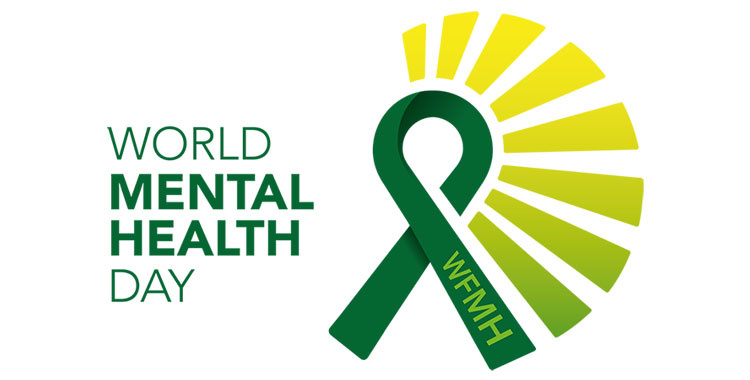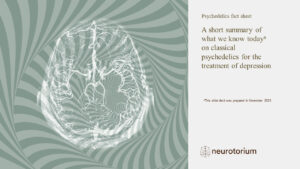Even in the absence of suicide, depression is linked to excess mortality. In a prospective study of more than a million Swedish men enlisted into the army, having a diagnosis of depression at age 18 was associated with a hazard ratio (HR) of 1.6 of non-suicidal death during a follow-up of 23 years.1 Data were adjusted for potential confounding factors such as socioeconomic status, IQ, body mass index and blood pressure.
Australian data from the period 1983 to 2007 paint a broadly similar picture: life expectancy is dramatically reduced when people in contact with mental health services are compared with those who are not; and the majority of the excess mortality is due to physical ill-health.2
This study from Western Australia linked a psychiatric diagnosis (the most prevalent being stress or adjustment reaction, affective psychosis, alcohol or drug disorder, schizophrenia and depression) to deaths recorded in the mortality register for the period.
The reduction in life expectancy associated with mental health problems is reaching 15.9 years for men and 12 years for women. Almost 80% of the excess mortality was due to physical health conditions: around 30% was attributable to cardiovascular disease, and 14% to cancer. Suicide accounted for 17% of excess mortality in males with a psychiatric diagnosis and 10% in females.
For these data we can confidently conclude that depression substantially reduces life expectancy even when suicide is excluded.1,2 But it is the connection between mental ill health and suicide, and what can be done by way of prevention, that is the focus of this paper.
Suicide prevention a global public health imperative
According to the World Health Organization (WHO), someone dies by suicide once every 40 seconds.3 This equates to approximately 800,000 deaths from suicide each year, a total mortality greater than that attributable to war and homicide combined. Suicide is the second most common cause of death in people aged 15 to 29 years (Fig 1)3 and it is a truly global problem: 79% of suicides are in low and middle-income countries, and nearly 30% are in India and China.4
Figure 1: Globally, suicide is a leading cause of death among young adults of both sexes
In the WHO World Mental Health Surveys, the presence of drug abuse or dependence doubles the risk of attempted suicide, while major depressive disorder (MDD) is associated with a three-fold increase in risk after controlling for comorbid psychiatric conditions.5
Mental health disorders overall were as predictive of suicide attempts in developing countries as they were in developed ones. However, the contributions of individual disorders differed: mood disorders were the strongest predictors of suicide attempts in developed countries while in developing countries the largest contributors were impulse-control, substance abuse, and post-traumatic stress disorders.5
Around 90% of people who die by suicide have a psychiatric disorder.6 Among them, up to half have MDD.7
What can be done? Prevention requires action at the level of the individual and at the level of society.
“ Prevention requires action at the level of the individual and at the level of society.”
October 10th
Ribbon up
ask all speakers and Board members to wear the WMHD green ribbon; consider including in the meeting packs of your participants or have it at your own booth as handout for new members
Promote and communicate
reference World Mental Health Day on agenda, in opening speech and sliders
Add the WMHD logo and hashtag in existing congress materials
proto frame, include your support in your membership booth, coffee cups, advertising, social media profile pictures #WorldMentalHealthDay, tag the @WMHDay
Get creative and green up
ask a local artist to paint a WMHD mural with the WMHD logo, light up the building of your congress in green, ask participants to write their commitment to better mental health and collect their feedback
Watch for warning signs; call for wider social action
Individual suicide attempts are often unpredictable, but in many cases there are warning signs in what someone says and does. People contemplating suicide may talk about ending their lives, feeling hopeless, having no reason to live, being a burden, being trapped, or experiencing unbearable physical or emotional pain.
They may show atypical aggression or fatigue, sleep less or more than usual, increase their use of alcohol or drugs, or withdraw from activities and give away possessions. Investigating means of suicide or prominently saying goodbye provide clear causes for concern.
More generally, since suicide is a problem of society and not just of the individual, wider preventive measures can be taken. These include:
- Reducing or limiting access to some of the means of suicide
- Encouraging the media to report on suicide in a responsible way, e.g., by not focusing on celebrities who have died by suicide but rather telling the stories of people who have coped with and overcome suicidality.
- Reducing the harmful use of alcohol and other drugs
- Combating poverty and deprivation while supporting those experiencing social dislocation
- Providing and publicizing suicide prevention services and resources
The major role of depression as the background to so many suicide attempts is plain. Paradoxically, this is also a reason for hope, since depression is a diagnosable and – most importantly – treatable condition in which an individual’s mood and quality of life can be enhanced.
More can be done through the early identification, treatment and care of people with MDD and other mental and substance use disorders, hopelessness and chronic pain. Even non-specialized healthcare professionals can be more fully trained in the recognition, assessment and management of suicidal behavior. And there is need for improved follow-up care and provision of community support for people who have attempted suicide.
Models using risk factors still predict only a minority of suicides
Also relevant to care provision is the finding from a meta-analysis of 44 studies that rates of suicide among hospitalized patients have been increasing in recent years, and the worrying suggestion that this risk increases with a shorter length of stay. 8
Such an association is difficult to interpret as it could be because patients who have been admitted to hospital over recent years are more severely ill than was previously the case. But we cannot exclude the possibility that shorter hospital stay itself is in some way responsible. This is perhaps supported by data showing that suicide rates are higher in the first three months after discharge.9
Comprehensive approach endorsed by WHO
The WHO has endorsed a comprehensive strategy aimed at reducing factors that increase suicide while enhancing “protective factors”. Among the latter are encouragement of strong personal relationships, a personal belief system, and positive coping strategies.10
In relation to risk reduction, the WHO distinguishes between three kinds of action.
- Universal approaches aim to reach an entire population. They include increasing access to healthcare, the promotion of mental health, reducing harmful alcohol use, and restricting access to the means of suicide (acknowledging that these may differ from one society to another).
- Selective strategies target and offer support to vulnerable groups such as people who have suffered trauma or abuse, those affected by conflict or disaster, refugees and migrants, and persons bereaved by suicide.
- “Indicated” strategies target specific individuals who are vulnerable, offering support for example to those discharged from mental healthcare facilities, to those with substance use disorders, and to those in high-risk professions.
Such a comprehensive approach offers hope that the World Mental Health Day’s aim of suicide prevention can be achieved, along with wider global awareness of the importance of mental health and the empowerment of those affected to take action and create lasting change.
At the same time, we cannot overpromise since the suicide phenomenon and its risk factors are complex.
Acknowledgement
We would like to thank Professor Koen Demyttenaere (University Psychiatric Center, KU Leuven, Belgium) for sharing his experience and insights into the causes and prevention of suicide and for providing feedback in the development of this article.
Access Article: European Brain Council’s Value of Treatment Project Aims to Optimize Care for Brain Disorders







